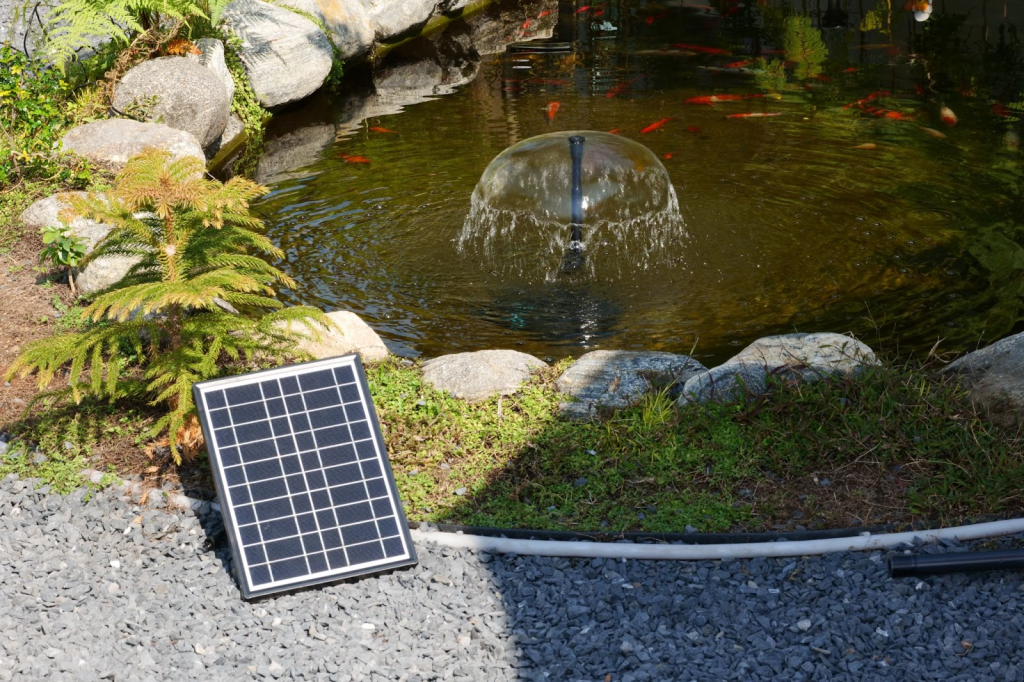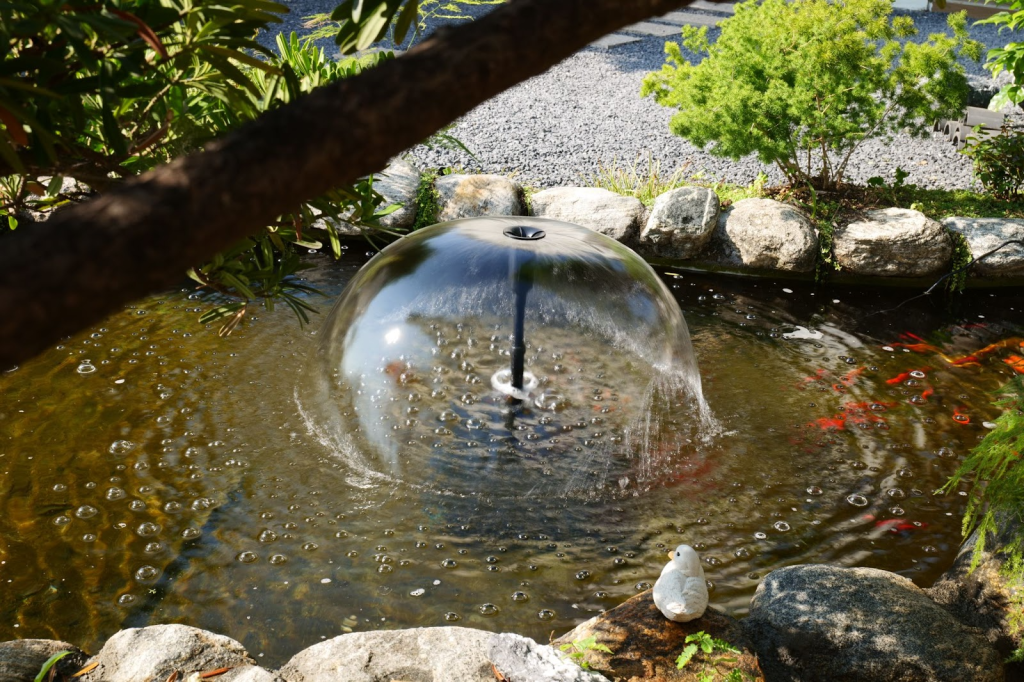A koi pond is not just a water feature; it’s a dynamic ecosystem and a home for living jewels. The heart of this ecosystem is the pump and filter system, a component you cannot afford to get wrong. Unlike a decorative garden pond, a koi pond has demanding biological requirements. Choosing the right pump is a critical decision that impacts water clarity, fish health, and your long-term operating costs.
This guide will walk you through the three pillars of selecting the perfect koi pond pump: achieving the correct Flow Rate, ensuring long-term Durability, and managing Energy Consumption.

Pillar 1: Flow Rate – The Foundation of Water Quality
For koi, flow rate isn’t just about creating a current; it’s about life support. The primary goal is to move the entire volume of the pond water through the filtration system frequently enough to remove waste and maintain high oxygen levels.
The Golden Rule: Turnover Rate
For a koi pond, the standard recommendation is to circulate the entire pond volume at least once every hour. For heavily stocked ponds, many experts recommend turning over the water every 45 minutes.
How to Calculate:
- Calculate Pond Volume: Length (ft) x Width (ft) x Average Depth (ft) x 7.48 = Volume (Gallons).
- Determine Required Flow Rate: For a one-hour turnover, your flow rate (in Gallons Per Hour, or GPH) needs to equal your pond volume. For a 90-minute turnover, divide your volume by 1.5.
- Example: A 1,500-gallon pond requires a pump with a minimum of 1,500 GPH for a one-hour turnover.
The Critical Factor: Accounting for Head Pressure
A pump’s maximum GPH is measured with zero resistance. In reality, your pump must work against:
- Vertical Lift: The height from the pump to the filter inlet or waterfall spillway.
- Horizontal Distance: The length of pipe or hose the water must travel.
- Friction Loss: Resistance from pipe bends, elbows, and the filter itself.
This total resistance is called Total Dynamic Head (TDH). As TDH increases, the pump’s effective flow rate decreases. Always consult the pump’s performance chart and select a pump whose flow rate at your specific TDH meets your turnover requirement. An all-in-one unit like the Poposoap pond pump and filter is designed with matched components to minimize these compatibility issues, but understanding the head pressure is still crucial for installation.
Pillar 2: Durability – Investing in Long-Term Reliability
A koi pond pump is not a seasonal accessory; it’s a piece of critical infrastructure that should run 24/7 for years. Durability is paramount.
Key Durability Features to Look For:
- Magnetic Drive vs. Direct Drive:
- Magnetic Drive: These pumps use a magnetic coupling to spin the impeller. They are highly energy-efficient, generate less heat, and are often sealed, making them less prone to burning out if they run dry accidentally. They are excellent for most standard koi ponds.
- Direct Drive: These have a more powerful motor directly connected to the impeller. They are typically more powerful and better for high-head applications like tall waterfalls, but they consume more energy and can be more susceptible to damage from running dry.
- Build Quality and Sealing:
Look for pumps with robust, corrosion-resistant housings. A pump designed for continuous outdoor submersion must have superior seals to prevent water from entering the electrical components. A reliable Poposoap solar pond pump and filter is built with these harsh conditions in mind, ensuring the motor remains dry and functional season after season.
- Debris Handling:
Koi produce a significant amount of waste. A pump with a large, accessible pre-filter or intake screen will require less frequent cleaning and is less likely to become clogged, which can strain the motor.

Pillar 3: Energy Consumption – The Silent Cost
A pump running 8,760 hours a year can lead to staggering electricity bills if you choose the wrong model. Energy efficiency is not just “green”; it’s a financial necessity.
Understanding Energy Use:
Pump energy consumption is measured in Watts. A small difference in wattage translates to a large difference in annual cost.
- Calculation Example:
- Pump A: 150 Watts | Pump B: 90 Watts
- Difference: 60 Watts
- Annual Energy Cost: (60W / 1000) * 24 hours * 365 days * $0.15/kWh = $78.84 in annual savings with the more efficient pump.
The Solar Solution:
For the ultimate in energy savings and sustainability, a solar-powered circulation system is an excellent option for supplemental aeration or for smaller koi ponds. While a primary filter pump may require significant energy, a dedicated solar water pump can be used to create additional surface agitation in a different part of the pond, boosting oxygen levels without adding a cent to your electricity bill.

Conclusion: Finding Your Perfect Balance
Selecting a koi pond pump is a balancing act. You need a flow rate powerful enough to ensure pristine water, a build durable enough to provide years of uninterrupted service, and an energy profile that doesn’t break the bank.
Before you buy, always:
- Calculate your true flow rate requirement after accounting for head pressure.
- Prioritize pumps known for reliability and designed for continuous duty.
- Compare the wattage of your final choices and calculate the long-term running costs.
By investing in a well-matched and efficient system from the start—whether a comprehensive Poposoap pond pump and filter combo or a carefully selected separate pump and filter—you make a decision that your koi, and your wallet, will thank you for. A clear, healthy pond is the result of a pump that perfectly balances flow, durability, and energy use.

